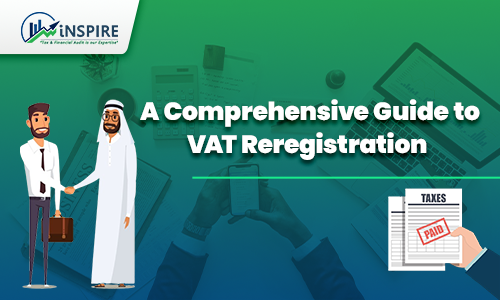
Update on Tax Groups in UAE Corporate Tax Law
Stay informed of the latest developments regarding tax groups in the UAE Corporate Tax Law. Learn about recent updates and their implications for businesses operating in the region.
The UAE's Ministerial Decision has introduced specific guidelines concerning Tax Groups by Article 40 of the UAE Corporate Tax Law.
What are the Ownership Requirements?
To establish or maintain the Group, it is essential to meet the ongoing criteria outlined in Article 40(1) of the UAE Corporate Tax Law throughout the entire duration of the relevant Tax Period.
What is Share Capital?
The term "share capital" denotes the nominal value of fully paid-up shares issued or the capital invested in memberships or partnerships of each corresponding subsidiary.
Resident Entity
Both the Parent Company and the Subsidiary must be legal entities recognized as residents for tax purposes exclusively within the UAE and not in any other country or foreign jurisdiction unless stated otherwise in a relevant international agreement.
Becoming Excluded from the Group
A group member is considered to have exited the group at the start of the period when it becomes a resident in another country or foreign territory.
Document Maintenance
To demonstrate its non-resident status for tax purposes in the mentioned country or foreign territory, a foreign legal entity recognized as a resident entity or a legal entity established or acknowledged under the relevant state laws but effectively managed and controlled in another country or territory must maintain supporting documentation.
What will be included in the Documentation?
The documentation must contain one of the following items:
- A statement issued by the tax authorities of the mentioned country or another foreign territory.
- A statement provided by the competent authorities responsible for facilitating the enforcement of the applicable international agreement in the UAE.
Pre-Formation or Joining Transactions Regulations
Transactions occurring between members of the group shall not be disregarded if a member has recorded a deductible loss in a tax period before joining or forming the group until the entire deductible loss is reversed.
Non-Eliminated Transaction
If a transaction is not disregarded, the group will incorporate any income associated with that transaction in calculating the taxable income of the group. This will be for the tax period in which the income was generated, up to the extent of the deductible loss previously deducted before joining or forming the group.
Formation of Joining Date of a Tax Group
An application must be submitted to the Authority before the end of the tax period in which the formation or joining of a group is requested. This requirement also applies when a new parent company replaces an existing one. The new parent company must meet the conditions outlined in Article 40.
Business Transfer to Another Entity: If a parent company transfers all of its business to another member within the same group and ceases operations as a result, the receiving member shall assume the position of the parent company effective from the date of the transfer.
Joining an Existing Group: A newly formed legal entity can join an existing group upon its formation if it falls under one of the following categories, except for the conditions specified in Clause (1) of this Article:
- A newly established subsidiary.
- A newly established parent company that replaces the current parent company of the group.
Assets, Liabilities, and Financial Positions of Members
Transactions between the Parent Company and each subsidiary that is a member of the group shall encompass the following:
- Transactions between two or more subsidiaries belonging to the same tax category.
- Valuation adjustments and provisions regarding transactions involving two or more members of the same tax group.
Elimination of Gain or Loss
When a gain or loss arising from a transaction between members of the same group is eliminated, this elimination must also consider any adjustments to the accounting values of relevant assets and liabilities resulting from the gain or loss.
Utilizing Pre-Grouping Tax Losses within a Tax Group
This aspect focuses on providing relief for pre-grouping tax losses to enhance the effectiveness and clarity of the law, particularly regarding the utilization of tax losses within a group.
Offsetting Pre-Grouping Tax Losses: The lesser of the following two amounts will determine the pre-grouping tax losses eligible for offsetting against the taxable income of a group in a specific tax period:
- The taxable income is attributable to a specific subsidiary within the tax group.
- The qualifying tax loss is utilized to reduce the taxable income of the tax group in the relevant tax period.
Any available pre-grouping tax losses must be offset against the taxable income of the tax group in that period before utilizing other carried forward tax losses of the group, in cases where the calculation of taxable income for a tax group results in a tax loss carried forward to subsequent periods.
Subsidiary's Tax Losses: It falls upon the parent company to determine which subsidiary's pre-grouping tax losses will be carried forward by the group if the total available pre-grouping tax losses for utilization in a tax period surpass the amount specified in Clause (1) of this article.
Pre-grouping tax losses are also governed by the provisions outlined in Article 37 of the Corporate Tax Law.
Transfer Pricing Documentation and the Arm's Length Principle Requirements:
When determining the taxable income attributable to one or more group members, the following factors must be considered:
- Whether a group member has unused pre-grouping tax losses.
- If a group member earns income eligible for foreign tax credit.
- Whether a group member benefits from listed corporate tax incentives.
- If a group member has pre-grouping net interest expenditure carried forward but not yet utilized.
Calculation of Taxable Income by the Tax Group: The group must:
- Calculate the taxable income allocated to each relevant member of the group following Article 34 of the Corporate Tax Law.
- Fully disclose all requested information by the Authority through notice or decision regarding transactions and agreements among relevant members, as well as between relevant members and their related parties and connected persons.
Determining Ownership Interest for the Transfer of Tax Losses:
The direct and indirect ownership interests of members within the same group shall be ascertained by consolidating the assets and liabilities of the parent company and its subsidiaries to fulfill the ownership requirements.
Simplifying Business Restructuring within Tax Groups:
The following measures aim to facilitate business restructuring across tax groups:
- If a member of the group decides to transfer all its operations to another member within the same group, the transferring member will be considered part of the group until the dissolution date, thereby ensuring the continuity of group operations.
- In cases where the group comprises only two members and one transfers all its business to the other, resulting in the discontinuation of the transferring member, it will cease to exist on the effective date of the transfer.
Transfer within the Group: If a member of the group transfers all its assets, or a portion thereof, to a newly formed legal entity, it will be considered an internal transaction within the tax group if the newly formed entity becomes part of the existing group.
It's important to note that the situations described in Clauses (1) and (2) of this Article do not require an election for Business Restructuring Relief.
Income from Internal Transfers and Deals Involving Business Restructuring:
Income associated with such transfers shall be treated as if it had not been considered for corporate tax purposes when members transfer one or more assets or liabilities.
Any income not taken into consideration regarding the transfer under Clause (1) shall be subject to the provisions of Article (42) of the Corporate Tax Law under the specified circumstances.
Notification of Subsidiary Departure or Termination of Tax Group Status:
The tax group must promptly notify the Authority within 20 business days from the date on which the conditions cease to be met if a subsidiary elects to leave or if it terminates due to no longer meeting the conditions outlined in Article 40 of the Corporate Tax Law.
Preparation of Financial Statements after Departure or Dissolution of a Tax Group:
Upon a subsidiary's departure from the group or dissolution, both the departing subsidiary and the former parent company must prepare their financial statements according to the group's accounting standards. Additionally, they must include the initial values of relevant assets and liabilities in their financial statements, along with the recorded values of such assets and liabilities.
Conclusion
The UAE Ministerial Decision provides much-needed clarity on Tax Groups and offers further guidelines on the subject.
Need help to understand the implications of a Tax Group? Contact us today.
FAQs
What are the ownership requirements for forming or continuing a Tax Group under the UAE Corporate Tax Law?
To establish or maintain a Tax Group, compliance with the ownership requirements outlined in Article 40 of the Corporate Tax Law throughout the relevant Tax Period is crucial.
What happens if a member of a Tax Group becomes a tax resident in another country or foreign territory?
If a member of a Tax Group becomes a tax resident in another country or foreign territory, they will be considered as leaving the Tax Group from the start of the Tax Period in which they become a tax resident in the other country or foreign territory.
Will transactions between members of a Tax Group be eliminated if a member recognizes a deductible loss regarding those transactions before joining or forming the Tax Group?
No, transactions between members of a Tax Group will not be eliminated if a member recognizes a deductible loss in a Tax Period before joining or forming the Tax Group. The deductible loss will remain recognized until fully reversed.
What is the deadline for applying to form or join a Tax Group?
The application to form or join a Tax Group must be submitted to the Authority before the end of the Tax Period in which the formation or joining of the Tax Group is requested.
Can a newly established legal entity join an existing Tax Group?
Yes, a newly established legal entity can join an existing Tax Group. They can join from the date of incorporation if they are either a newly established subsidiary or a newly established parent company replacing the existing parent company of the Tax Group.











